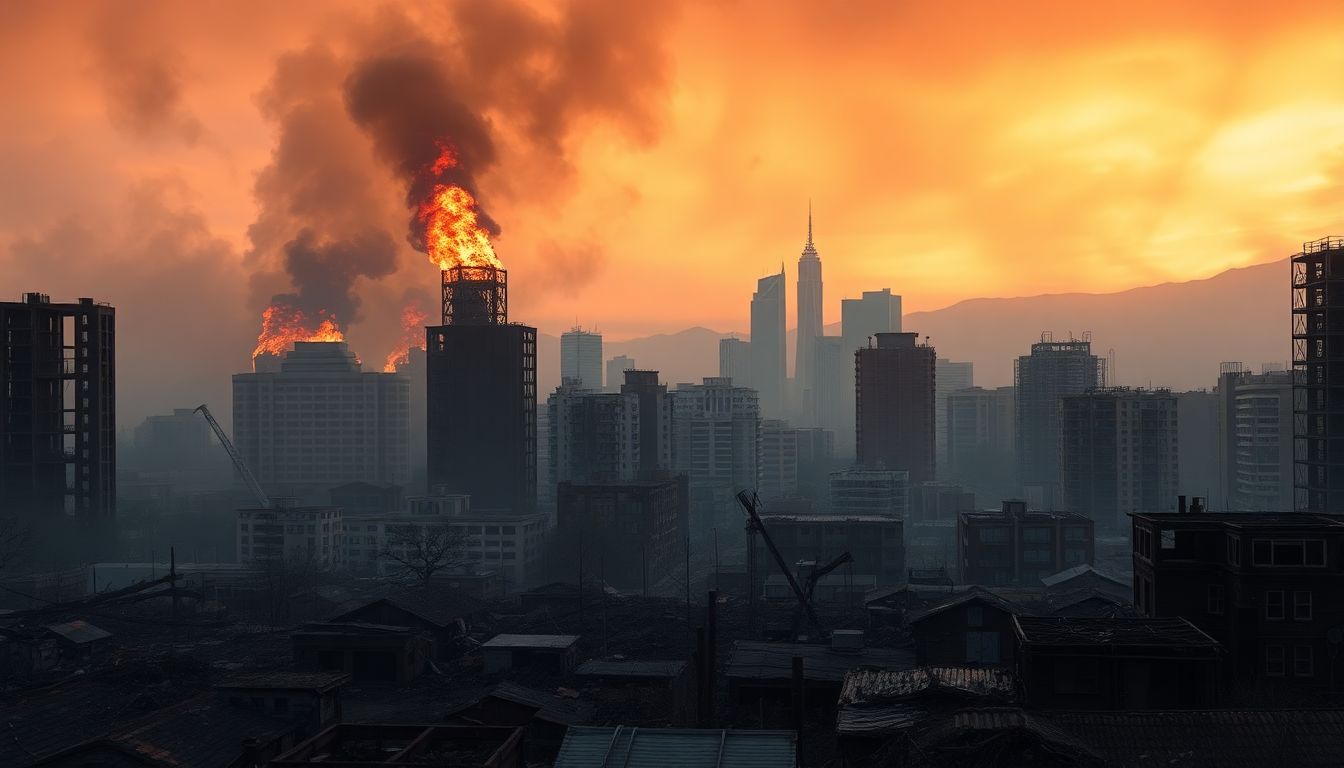
The wildfires that swept through Los Angeles have caused unimaginable devastation, with damages estimated at a staggering $150 billion. These fires, which occurred in September 2023, transformed iconic neighborhoods and local businesses into ruins, leaving an indelible mark on the community and the economy. The magnitude of this disaster not only affects immediate recovery efforts but also poses significant long-term economic challenges for the region.
The Scale of Destruction: A Financial Earthquake
Property Damage: Homes, Businesses, and Infrastructure
The wildfires obliterated thousands of buildings, including homes and businesses across several neighborhoods.
- Over 30,000 homes were lost.
- An estimated 4,000 businesses faced destruction.
The financial toll breaks down as follows:
- Residential Property Damage: Roughly $100 billion, including home reconstruction and personal belongings.
- Commercial Property Damage: About $50 billion, with many businesses facing permanent closure.
Environmental Impact: Long-Term Costs of Remediation
The fires left a scarred landscape, necessitating extensive cleanup:
- Cleanup Costs: Estimated at $10 billion, including debris removal and firefighting efforts.
- Health Concerns: Air quality issues can lead to long-term health problems like respiratory illnesses, costing additional billions for treatment in the coming years.
Insurance and the Burden of Losses
The Role of Insurance in Disaster Recovery
Insurance plays a critical role in helping victims recover, but payouts may fall short:
- Estimated insurance claims could reach $80 billion.
- Companies face challenges in processing a massive influx of claims, leading to delays.
Underinsured Properties and the Gap in Financial Support
Many residents find themselves underinsured:
- Approximately 60% of homes in affected areas lacked adequate coverage.
- Government aid is often slow and limited, leaving many without essential support.
Economic Ripple Effects Across Los Angeles
Impact on Employment and Businesses
The fires have had a ripple effect on employment in various sectors:
- An estimated 50,000 jobs lost in tourism, construction, and local services.
- Small businesses struggle to bounce back with limited resources.
Disruptions to Supply Chains and Trade
Local and regional economies face significant interruptions:
- Supply chain disruptions may hinder access to resources, delaying recovery.
- The long-term impact could stifle economic growth, affecting overall development.
The Human Cost: Beyond Monetary Losses
Displacement and the Strain on Social Services
The personal toll is immense:
- Approximately 100,000 people were displaced.
- Increased demand for social services, healthcare, and emergency aid stretches resources thin.
Mental Health Impacts and Long-Term Recovery
Survivors face ongoing mental health challenges:
- Many experience PTSD and anxiety, affecting daily life.
- Communities need to bolster mental health support to aid recovery.
Preventing Future Catastrophes: Mitigation and Preparedness
Implementing Improved Fire Prevention Strategies
To reduce future risks, proactive measures are essential:
- Land management practices can help lower fire risks.
- Investing in early warning systems will enhance community preparedness.
Strengthening Building Codes and Infrastructure
Enhancing resilience is crucial:
- Encouraging fire-resistant construction techniques can protect homes and businesses.
- Upgrading infrastructure can better withstand wildfire threats.
Conclusion
The economic impact of the LA fires, totaling $150 billion, has reshaped the landscape for residents and businesses alike. Moving forward, it is imperative for the community to unite in prevention, recovery, and building resilience against future disasters. This catastrophe underscores the urgent need for action, highlighting the long-lasting implications for the economy and the fabric of Los Angeles. Together, proactive steps can lead to a stronger, safer future.
https://newfactsonly.blogspot.com/



